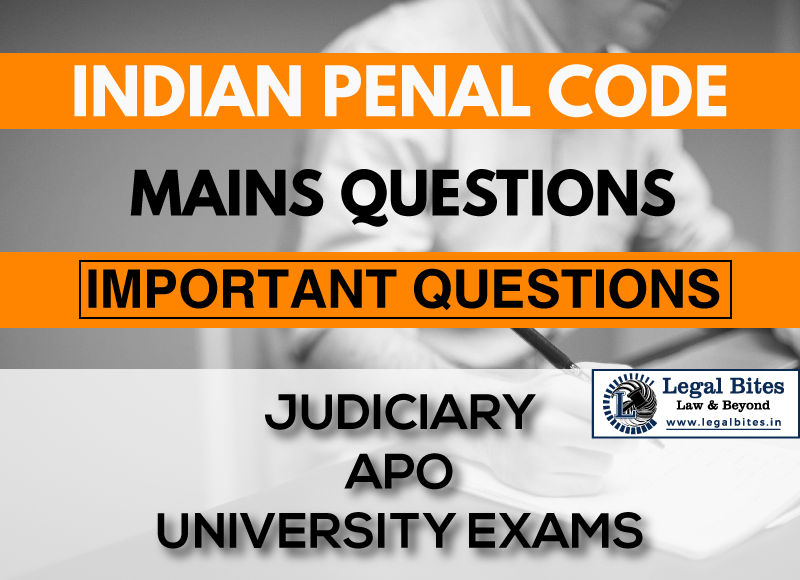Six persons are charged under Section 302/149, I.P.C. Three of them are acquitted by the trial court. Remaining three are convicted under Section 302/34, I.P.C. and given life imprisonment. Discuss the validity of this conviction.
Find the answer to the mains question of IPC only on Legal Bites.

Question: Six persons are charged under Section 302/149, I.P.C. Three of them are acquitted by the trial court. The remaining three are convicted under Section 302/34, I.P.C., and given life imprisonment. Discuss the validity of this conviction. [Bihar A.P.P. (A.P.O.) Exam, 1985] Find the answer to the mains question of IPC only on Legal Bites. [Six persons are charged under Section 302/149 I.P.C. Three of them are acquitted by the trial court. The remaining three are convicted under...
Question: Six persons are charged under Section 302/149, I.P.C. Three of them are acquitted by the trial court. The remaining three are convicted under Section 302/34, I.P.C., and given life imprisonment. Discuss the validity of this conviction. [Bihar A.P.P. (A.P.O.) Exam, 1985]
Find the answer to the mains question of IPC only on Legal Bites. [Six persons are charged under Section 302/149 I.P.C. Three of them are acquitted by the trial court. The remaining three are convicted under Section 302/34, I.P.C., and given life imprisonment. Discuss the validity of this conviction.]
Answer
In a case where more than 4 persons are charged with the aid of Section 149 and on the basis of evidence adduced, it appears to the trial court that three of them are innocent then the court may acquit the three accused. Section 149 of the Indian Penal Code (IPC) deals with the concept of "common object." For Section 149 to be invoked, there must be at least five persons forming an unlawful assembly.
Further, if it appears to the trial court that the remaining accused persons have committed murder in furtherance of their common intention i.e. with a pre-arranged plan, they can be convicted under Section 302 read with Section 34 of IPC.
The Supreme Court of India in the case of Jagir Singh v. State, AIR 1968 SC 43 and Gupteshwar Nath Ojha v. State of Bihar, 1986 SCC (Cr) 191 also supported such a view. In this context, it might be pointed out that in order to apply Section 149, there must be more than four persons. It is notable that for the offence of murder, the minimum punishment is life imprisonment. The trial court is bound to pass a minimum sentence i.e. life imprisonment, to the remaining convicted accused persons. Thus, it can be said that the sentence of life imprisonment given by the trial court in this problem is proper, hence conviction is valid.
Important Mains Questions Series for Judiciary, APO & University Exams
- IPC Mains Questions Series Part I: Important Questions
- IPC Mains Questions Series Part II: Important Questions
- IPC Mains Questions Series Part III: Important Questions
- IPC Mains Questions Series Part IV: Important Questions
- IPC Mains Questions Series Part V: Important Questions
- IPC Mains Questions Series Part VI: Important Questions
- IPC Mains Questions Series Part VII: Important Questions
- IPC Mains Questions Series Part VIII: Important Questions
- IPC Mains Questions Series Part IX: Important Questions
- IPC Mains Questions Series Part X: Important Questions
Admin Legal Bites
Legal Bites Study Materials correspond to what is taught in law schools and what is tested in competitive exams. It pledges to offer a competitive advantage, prepare for tests, and save a lot of money.
